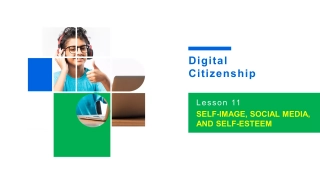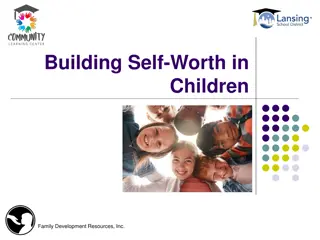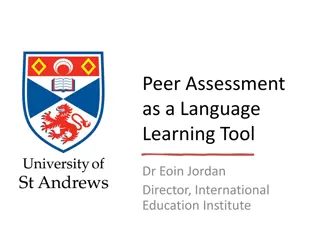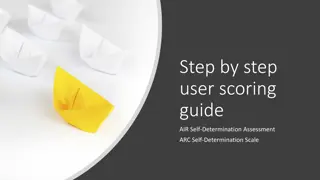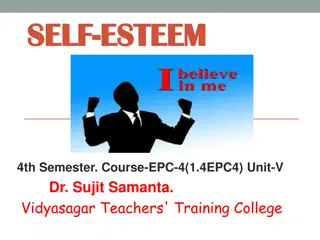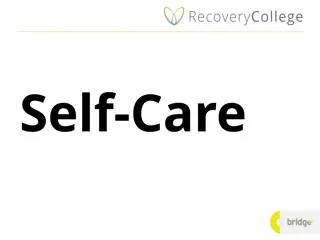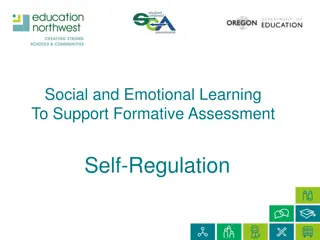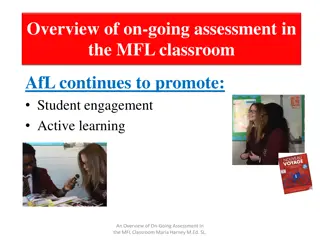
Steps and Requirements for Special Education Monitoring Process
Learn about the special education monitoring process for local agencies, including self-assessment, corrective action, and focused reviews. Understand the timeline and activities involved, as well as resources for assistance. Explore components like file review, evaluation timelines, and parent surveys in detail.
Download Presentation

Please find below an Image/Link to download the presentation.
The content on the website is provided AS IS for your information and personal use only. It may not be sold, licensed, or shared on other websites without obtaining consent from the author. If you encounter any issues during the download, it is possible that the publisher has removed the file from their server.
You are allowed to download the files provided on this website for personal or commercial use, subject to the condition that they are used lawfully. All files are the property of their respective owners.
The content on the website is provided AS IS for your information and personal use only. It may not be sold, licensed, or shared on other websites without obtaining consent from the author.
E N D
Presentation Transcript
1 SPECIAL EDUCATION COMPLIANCE TIERED FEDERAL MONITORING SELF-ASSESSMENT TRAINING COHORT 1 Missouri Department of Elementary and Secondary Education 2020
WELCOME COHORT 1! 2 Introductions Drop your questions in the chat. THANKS in advance for muting your microphone.
Learning Objectives 3 Participants will learn 1. the steps in the special education monitoring process for local agency self-assessment; 2. the required activities for the self- assessment and their due dates; 3. How to find resources for assistance with questions.
Program Monitoring of Districts 4 Once every three years each district will go through the cyclical monitoring process. The cyclical monitoring process includes: Self-Assessment (Year 1) Corrective Action (Year 2) Focused Reviews - Approximately 5-10% of LEAS in each cohort will be chosen to participate annually. Maintain & Retrain (Year 3)
Self-Assessment Year 1 5 Training for Self-Assessment - Oct 2020 Conduct Self-Assessment - Nov 2020 - Jan 2021 Submit Self-Assessment in IMACS 2.0 Feb 1, 2021 Submit Verification Documentation for the Desk Review-Apr-1-21 Submit Timelines (Initial/C to B) - May 15, 2021
Five Components of the Self Assessment 7 1. File Review 2. Initial Evaluation Timelines 3. C to B Transition Timelines 4. Upload requested documents in IMACS 2.0 5. Parent Surveys
File Review: Number of Student Files Included 8 Number of files to select: Based on the December 1, 2019 child count for the agency, the following number of files should be used as a guideline for determining the total number of files reviewed:
File Review: Selecting Student Files 9 Student files selected by the district for self-assessment should represent A cross section of ages, grade levels and buildings within the district including ECSE and transition A variety of disabilities and placements: Intellectual Disabilities (ID), Other Health Impaired (OHI), Specific Learning Disability (SLD) Select files for students evaluated or reevaluated in the current and prior school year
File Review: Types of Student Files 10 Every district will select a sampling of files for students who: Had initial evaluations, Were reevaluated with or without assessment, Have postsecondary transition plans Use each student s file for reviewing as many indicators as possible
Required/Conditional Indicators 11 Required Indicators Conditional Indicators Referral (initial only) MAP-A Evaluation Eligibility (SLD,OHI, ID) Reevaluation Long Term Suspensions IEP Least Restrictive Environment Postsecondary Transition
File Review: Selecting a Variety of Files 12 Initial Evaluations When conditional indicators are triggered, include students eligible using criteria for SLD, ID and OHI Reevaluations IEPs A variety of grade levels including ECSE A minimum of five IEPs with postsecondary transition plans IEPs for students enrolled in MAP-A when conditional indicators are included
Enter Student Demographic Data In IMACS 2.0 13 There are now two ways to add data: Type student demographic data in IMACS 2.0 Upload student demographic data to IMACS 2.0
File Review: Assemble Documents 14 Initial Evaluations Referral, review of existing data, evaluation report and IEP Prior Written Notices Meeting Notifications Meeting Notes or Contact Logs, if applicable Discipline documentation Documents with Parent Signature (when required)
File Review: Conducting Self Assessment 15 Read the entire indicator. Refer often to the Special Education Compliance Program Standards and Indicators manual for guidance and clarification. Do not rely only on the IMACS 2.0 checklist language. Determinations are Yes = documentation is present/correct No = documentation does not meet compliance N/A= indicator doesn t apply
Documentation for the Desk Review Verification 16 Upon request by the DESE compliance supervisor, upload documentation from the files of specific students chosen for the desk review. Upload to IMACS 2.0 no later than April 1, 2021. DESE supervisors will review and verify each district s self-assessment in IMACS 2.0 during desk monitoring conducted from April through July 2021. Provide your supervisor with summer contact info (cell phone #, email address) in case of questions or if additional documentation is needed to complete the verification. Keep an electronic copy of the documents, including those that have signatures, in an easy-to-access, central location.
Timelines: Submission 17 Timeline submission due May 15, 2021. Initial Evaluations Include all students with initial evaluations (ineligible and eligible). Include initial evaluations that began after July 1, 2020 and are finished before April 30, 2021 Part C to Part B Transition Include children who were referred from First Steps between July 1, 2020 and April 30, 2021 and whose 3rd birthday falls before April 30, 2021.
Parent Surveys 18 Purpose is to increase parent engagement and Provide data for SPP Indicator 8: Percent of parents with a child receiving special education services, who report school facilitated parent involvement as a means of improving services and results for children with disabilities. All parents of students with disabilities served by the LEA should participate in the Parent Survey: During second semester of the 2020-21 school year, the University of Missouri will send out the survey Follow instructions for conducting the survey LEA provides parent with survey Parent completes and returns survey LEA will receive results of surveys to use in planning for increasing parent involvement.
Learning Objectives 19 Participants will know 1. the steps in the special education monitoring process for the self- assessment; 2. the required activities included in the self-assessment and due dates for submission; 3. resources for questions and assistance.
Questions? Please contact: 21 Office of Special Education Special Education Compliance (Part B) P.O. Box 480, Jefferson City, MO 65102- 0480 Phone: 573-751-0699 Email: secompliance@dese.mo.gov
22 The Department of Elementary and Secondary Education does not discriminate on the basis of race, color, religion, gender, national origin, age, or disability in its programs and activities. Inquiries related to Department programs and to the location of services, activities, and facilities that are accessible by persons with disabilities may be directed to the Jefferson State Office Building, Office of the General Counsel, Coordinator Civil Rights Compliance (Title VI/Title IX/504/ADA/Age Act), 6th Floor, 205 Jefferson Street, P.O. Box 480, Jefferson City, MO 65102-0480; telephone number 573-526-4757 or TTY 800-735-2966; fax number 573-522-4883; email civilrights@dese.mo.gov

